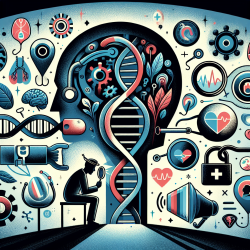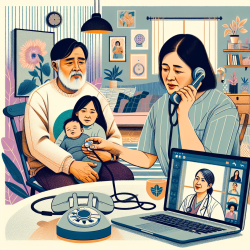Understanding Morquio-B Disease: A Data-Driven Approach for Practitioners
Morquio-B disease (MBD) is a rare genetic disorder that presents unique challenges for practitioners, particularly those involved in speech language pathology and therapy services. As a distinct GLB1-related dysostosis multiplex, MBD affects the trabecular parts of long bones and the spine, manifesting as a mild phenocopy of GALNS-related Morquio-A disease. This blog aims to provide practitioners with a comprehensive understanding of MBD, drawing on the latest research to enhance therapeutic outcomes for affected children.
Key Findings from Recent Research
The research article titled "Morquio-B disease: Clinical and genetic characteristics of a distinct GLB1-related dysostosis multiplex" by Abumansour et al. offers valuable insights into the clinical, biochemical, and genetic features of MBD. The study analyzed 63 cases, providing a robust dataset for practitioners to consider.
- 41 of 51 cases with informative clinical data exhibited pure MBD, characterized by progressive growth impairment, kyphoscoliosis, coxa/genua valga, joint laxity, platyspondyly, and odontoid hypoplasia.
- 10 of 51 cases had MBD with neuronopathic manifestations, including intellectual, developmental, and speech delays, as well as spasticity, ataxia, and dystonia.
- Corneal clouding, cardiac valve pathology, hepatosplenomegaly, and spinal cord compression were infrequent, while atlantooccipital dislocation, cardiomyopathy, and cherry red spot were never reported.
- Urinary glycosaminoglycan and oligosaccharide excretion were consistently abnormal, with keratan sulphate-derived oligosaccharides detected only using LC-MS/MS-based methods.
- Among 28 GLB1 variants, W273-L and T500A were the most frequent, with W273L invariably associated with pure MBD.
Implications for Practitioners
Understanding these findings is crucial for practitioners who aim to provide effective interventions for children with MBD. The presence of neuronopathic manifestations in some cases highlights the need for a multidisciplinary approach, involving speech language pathologists, geneticists, and other healthcare professionals.
Practitioners should consider the following strategies to improve outcomes:
- Early Diagnosis: Utilize genetic testing and biochemical analysis to identify MBD early, allowing for timely intervention.
- Individualized Therapy Plans: Tailor therapy plans to address the specific needs of each child, considering both physical and cognitive challenges.
- Collaborative Care: Work closely with a team of specialists to provide comprehensive care, addressing both the physical and neurological aspects of MBD.
- Family Education: Educate families about the condition and involve them in the therapy process to ensure consistent support at home.
Encouraging Further Research
While the current research provides a solid foundation, there is a need for ongoing studies to better understand the natural history of MBD and the efficacy of various therapeutic interventions. Practitioners are encouraged to contribute to research efforts and stay informed about the latest developments in the field.
To read the original research paper, please follow this link: Morquio-B disease: Clinical and genetic characteristics of a distinct GLB1-related dysostosis multiplex.










